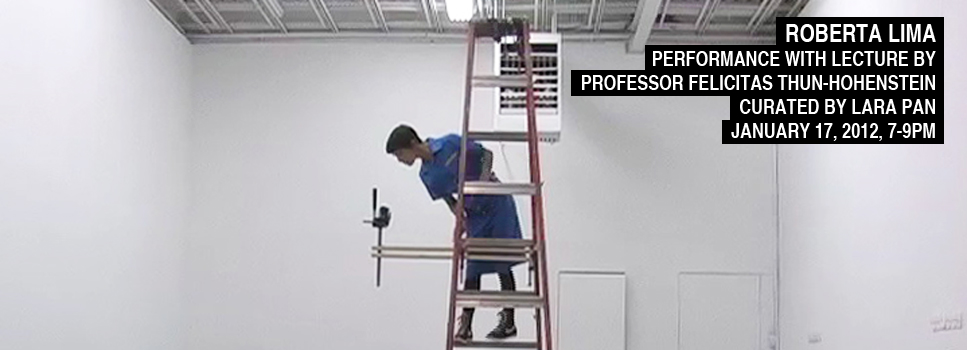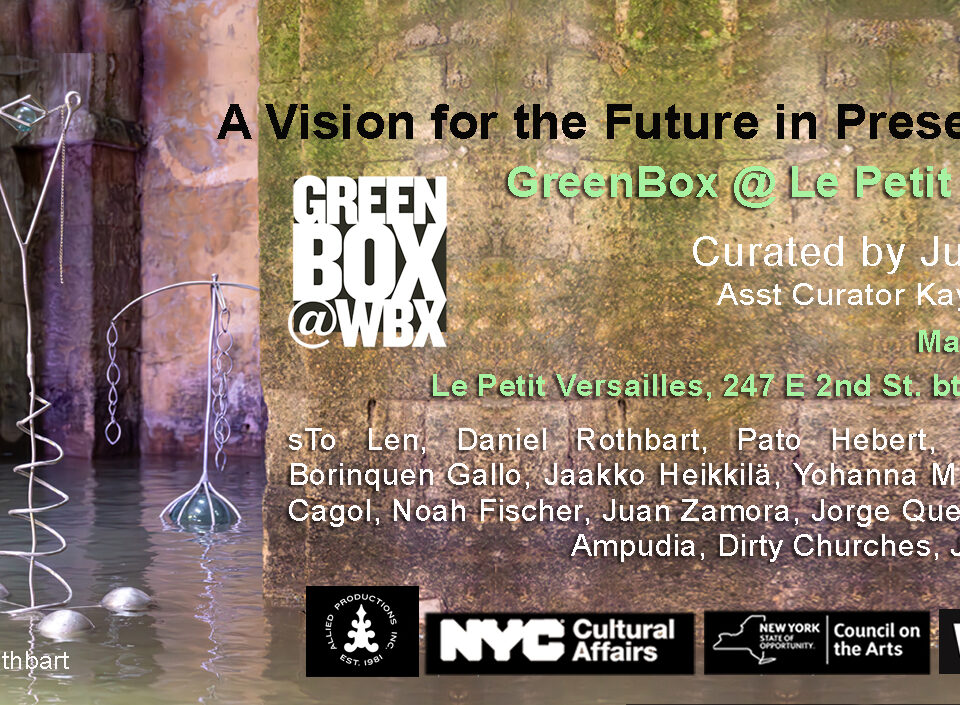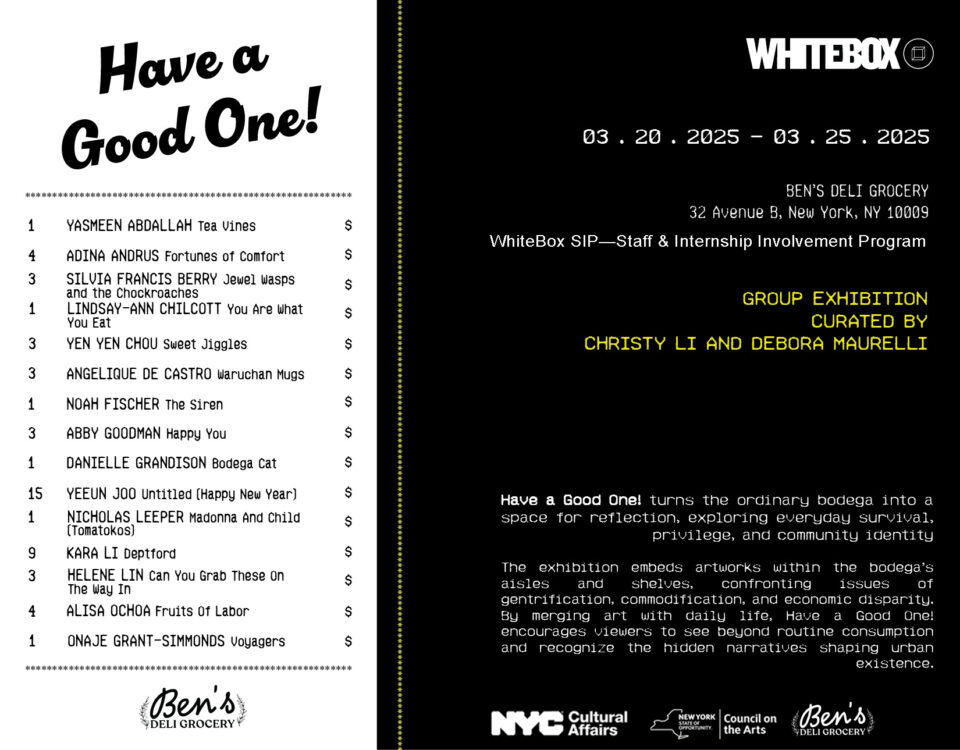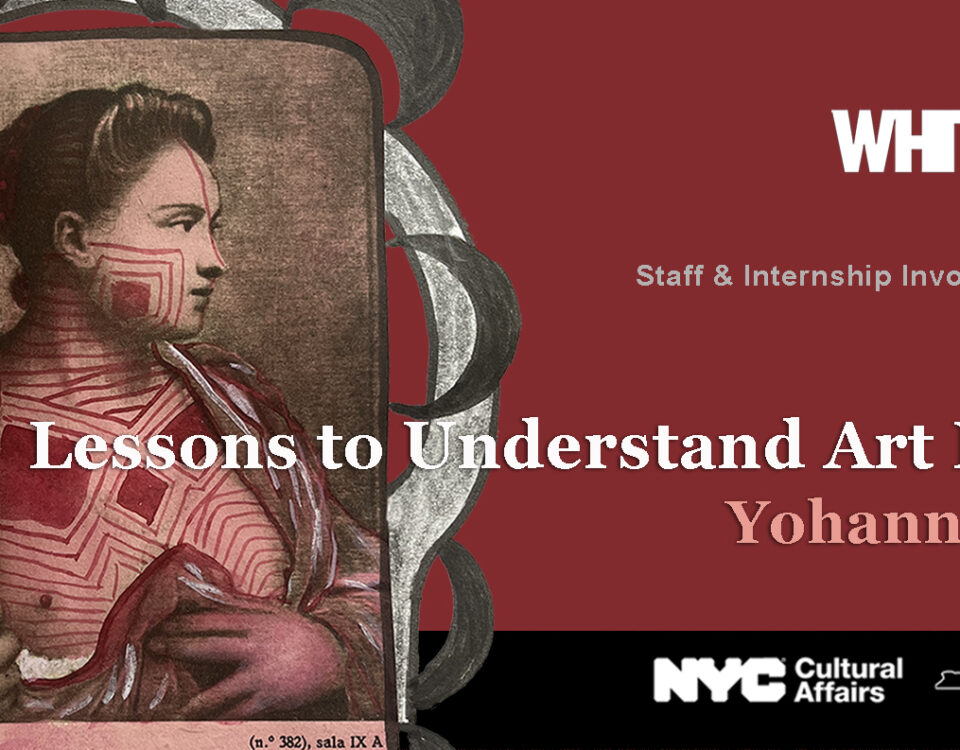OUTLAW
January 11, 2012ALL HUMANS DO
January 20, 2012ROBERTA LIMA
PERFORMANCE WITH LECTURE BY
PROFESSOR FELICITAS THUN-HOHENSTEIN
CURATED BY LARA PAN
JANUARY 17, 2012, 7-9PM
White Box presents Displacement, the New York debut performance and installation by Brazlian artist Roberta Lima,followed by a lecture by Professor Felicitas Thun-Hohenstein. The artistic approach of Roberta Lima explores fundamental aspects related to performing arts movement, space, body, past experiences, and emotional associations.Her experience as an architect distinguishes her artistic expression among new forms of performance art.
The public at her performances goes through the process of testing the temporal effects of architectural articulation where the artist explicitly uses her body as a tool in the service of architecture. This experience encourages the audience to function together to debate the language of performance. Her performance that took place in 2008 in the city of Krems called 6teen Stitches, where she manifests her critique of historically as well as socially defined female stereotypes, is the construction and deconstruction of femininity. The question of how a live-performance creates and influences social relations and space plays an important part in this. After the live-performance, the video loops continue to exist in the form of an installation in the festival venue. This and other earlier performances of Roberta Lima reexamined feminism through architecture, illustrating and honoring circus freak-show performances from the past, where the perfect concentration and a domination of body and space were major elements.
“Displacement” has many interesting components. Roberta Lima marries elements from “The Burial” (Foundation),”The Fall” (Rupture, partial exposure) and “The Excavation” (search explore). In doing so, Lima is exploring with boundaries of feminism again particularly when considered in light of Dolores Haydenʼs perspective on the architecture of gender. According to Hayden, the predominant architecture is for two-earner families, which Lima represents in “The Burial” (Foundation). The single parent family (Hayden), Lima represents as The Fall (partial exposure). Hayden terms architecture for the single people what Lima represents as “The Excavation” (search for and exploration of the self). She is suggesting architecture of bold communications.“Displacement” contains the spy camera in the concrete block. The spy camera is an omnipresent component in Limaʼs performance. It is replacement for what we call “Plan” in architecture.
“If the plan is clear you can see where to go” In her recent projects, Lima attached the spy camera to her body and connected it to visual mediums through cables. The cables limited her movements, yet they linked her body to the space. The spy camera enables this connection by mapping and registering the traces left by her actions. For the performance at White Box, Lima “displaces” the spy camera by installing the camera on another surface: inside the concrete cube. If at the start her body is still connected to it (when she carries, holds the cube), during the fall, the spy camera will travel the various plans of the space and will gradually take a distance to Lima’s body.
The performances of Roberta Lima can create a healthy controversy. The idea of the process is present in the different stages of her work. Space, time, and body have been put in a fragile situation. She is creating a conceptual meeting of the architectural implications in the critical social and gender issues of our era.
—Lara Pan
For press inquiries please contact press@whiteboxny.org or 212-714-2347
Press




